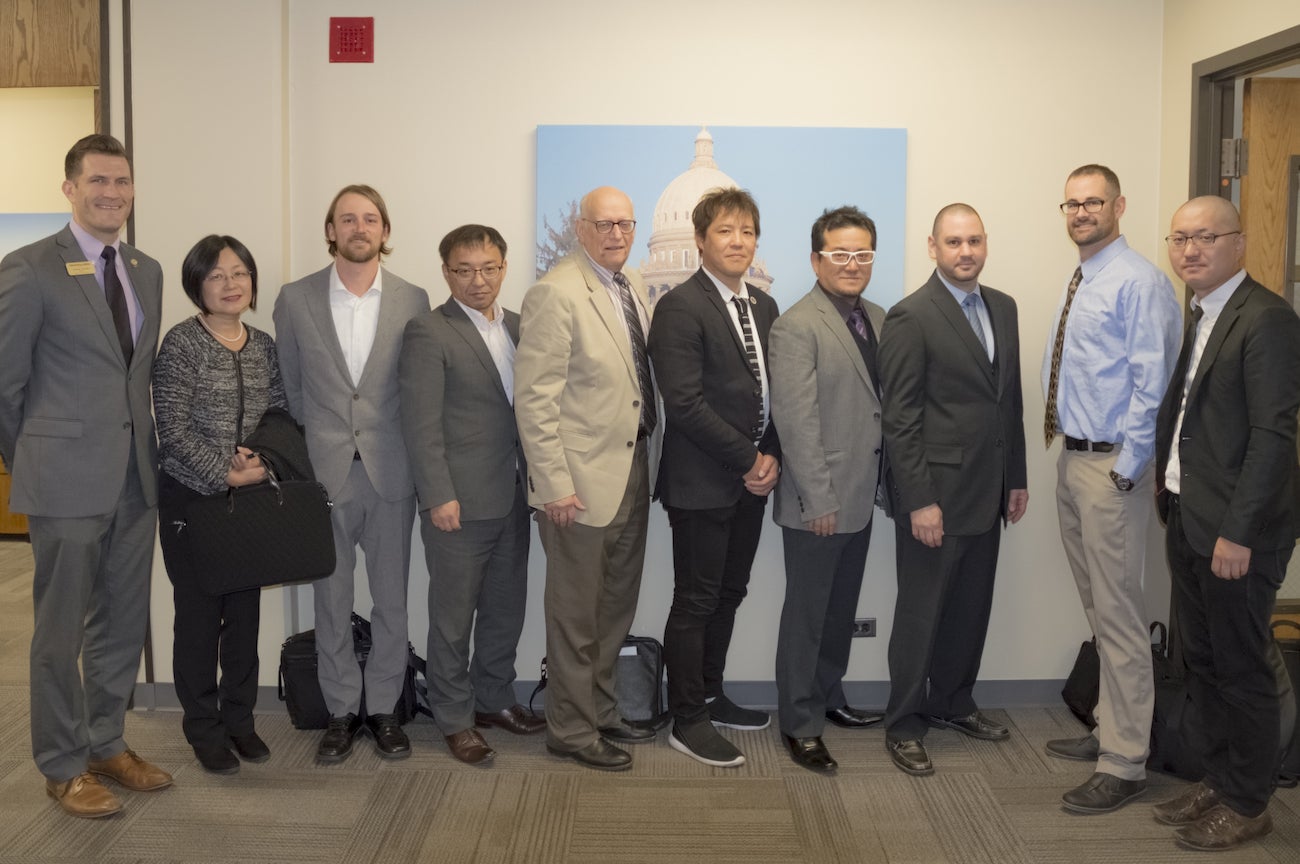
A team of researchers from Boise State University, the University of Idaho, the Idaho National Laboratory (INL) and Sakae Casting recently were awarded a two-year Idaho Department of Commerce Idaho Global Entrepreneurial Mission (IGEM) grant to design a new, safer and more efficient method for cooling and storing the spent nuclear fuel from nuclear reactors.
“As the project progresses, I’ll be providing the materials, they’ll be modeling it and telling me what they need in terms of phases and thermal properties, and what the requirements for the design are,” explained Brian Jaques, an assistant research professor in Boise State’s materials science and engineering department. “Sakae will then be casting our design.”
There are more than 450 nuclear power plants safely operating all over the world, and each of these plants must replace its fuel supply every three years and safely store the spent nuclear fuel, which allows the material to lessen its head load before transferring to permanent storage. Currently, spent fuel is stored in pools of water for 10-20 years before safely being sealed in concrete storage casks. Monitoring the water levels and ensuring a readily available water supply in the pools during this time is extremely critical. Indeed, it was a loss of cooling water in these ponds during the 2011 tsunami and earthquake in Japan that led to radioactive release and compromised fuel at the Fukushima nuclear power plants.
The IGEM team could potentially revolutionize this nuclear fuel storage process. The team proposed designing and fabricating borated aluminum casks that could safely store and cool spent fuel while substantially reducing the amount of water required and providing a smaller footprint for storage.
This ambitious project is only possible because of the collaborators involved; each is a leader in their area of expertise but none could have undertaken this project alone.
Sakae Casting is a Japan-based casting company that has recently opened an office in Idaho Falls and is looking to build strong partnerships (and provide good jobs) in the state. The company is seeking to enter the nuclear industry and approached University of Idaho researchers with a novel new cooling technology and a question, “could this be put to use in the nuclear industry?”
Researchers from University of Idaho’s Nuclear Engineering Program answered with a resounding, “Yes!” They sketched a draft of what a nuclear fuel cask could look like, using this new cooling technology, and are now seeking to gain valuable computational and engineering expertise as they fully model their design, which includes quantifying and validating the amount of radiation released by the spent fuel and the neutron flux to design the cask accordingly.
Researchers from Boise State’s Micron School of Materials Science and Engineering were brought in to develop and optimize the fabrication methods of materials needed for the cask – which must meet the unique requirements of safely holding hot, spent nuclear fuel. This project is an exciting undertaking for researchers because it presents new challenges to materials science and engineering design as well unique training opportunities for the future workforce, particularly with the nuclear energy sector.
Finally, the cask design work itself will be done at the Center for Advanced Energy Studies, which is a research consortium among the Idaho research universities, University of Wyoming and INL. In addition, the laboratory will ensure the IGEM team is best equipped to have a design that will fall within the requirements imposed by the federal Nuclear Regulatory Commission, so it can be deployed as a usable product in the nuclear industry.